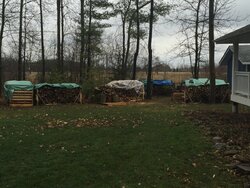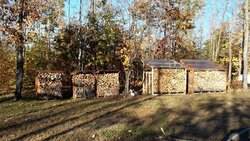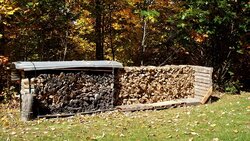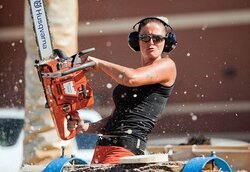Hello! I'm new to the forum and very inexperienced with woodburning but SO excited to start. My husband and I are buying a Woodstock Keystone and converting to 100% wood heat from oil heat. We are unhooking our furnace so we can vent through the same chimney so we're committed.
We're currently building our hearth pad and will have the stove in about a month.
There is so much to learn and I'm having a hard time following all the terminology. Please help a newbie. We want to eventually cut all our wood. I'm thinking we'll need to buy seasoned wood for this coming year but want to start our wood pile for coming years. What is the cheapest/easiest way to do this?
I thought we could buy a truckload of logs and move from there. Maybe it's better to buy smaller logs and just split them, though. I don't know...what would you recommend? How many cords should we try to cut this year to get ahead?
This is my understanding of the process; please correct me if needed:
1). cut tree length log into 16" logs (with what? a chainsaw?). Is this called "bucking"?!
2). split logs into firewood pieces (with a splitter that we rent?)
3). stack firewood on pallets and cover with a roof to protect from rain
Is that the gist? What equipment is needed and what makes sense to buy vs rent?
I'll probably keep asking questions, but this is where I'm starting. Thanks in advance!
We're currently building our hearth pad and will have the stove in about a month.
There is so much to learn and I'm having a hard time following all the terminology. Please help a newbie. We want to eventually cut all our wood. I'm thinking we'll need to buy seasoned wood for this coming year but want to start our wood pile for coming years. What is the cheapest/easiest way to do this?
I thought we could buy a truckload of logs and move from there. Maybe it's better to buy smaller logs and just split them, though. I don't know...what would you recommend? How many cords should we try to cut this year to get ahead?
This is my understanding of the process; please correct me if needed:
1). cut tree length log into 16" logs (with what? a chainsaw?). Is this called "bucking"?!
2). split logs into firewood pieces (with a splitter that we rent?)
3). stack firewood on pallets and cover with a roof to protect from rain
Is that the gist? What equipment is needed and what makes sense to buy vs rent?
I'll probably keep asking questions, but this is where I'm starting. Thanks in advance!




 Read this forum, then read some more, asking questions along the way.
Read this forum, then read some more, asking questions along the way.



